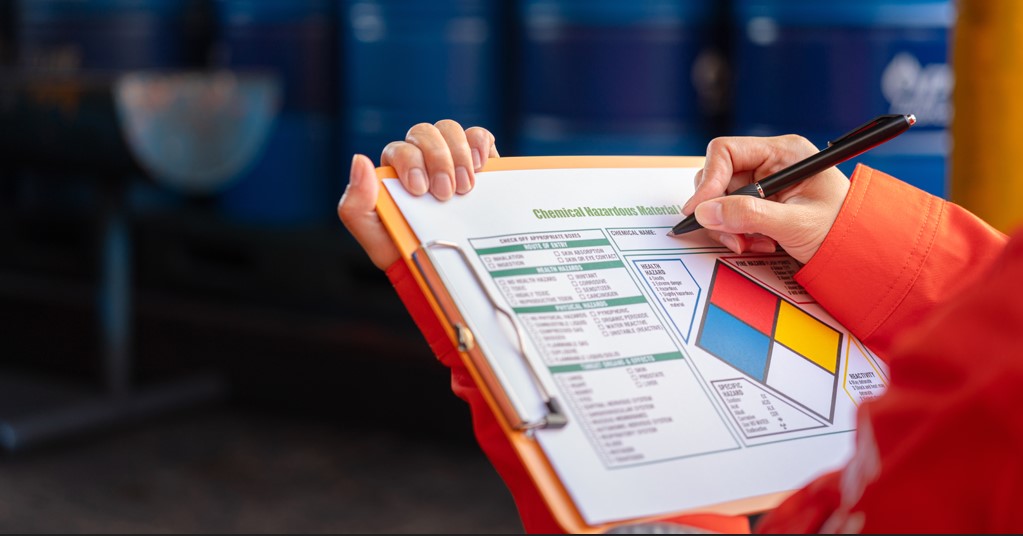
A Comprehensive Guide to Personal Protective Equipment

Federal, state or local regulations may require the use of certain types of personal protective equipment (PPE) to improve workplace safety. It is generally the responsibility of an employer to provide appropriate protective equipment as well as training in its use to workers when hazards cannot be avoided or eliminated. PPE can take many forms and the right types for your workplace will depend on the hazards that are present there.
At ComplianceSigns, we take PPE requirements seriously. We have compiled this extensive guide to workplace PPE to help you understand how to implement proper protective equipment policies at your workplace. We have a huge collection of workplace PPE signs and another section of PPE safety posters dedicated to appropriate PPE types and procedures.
PPE GUIDE Table of Contents
- PPE Meaning: What Is PPE?
Types of PPE Equipment
OSHA PPE Requirements
CDC PPE Requirements
PPE Use Examples
How To Put On PPE
PPE FAQ
Additional Resources
PPE Meaning: What Is PPE?

PPE has been making headlines, but that certainly doesn’t mean everyone understands what it is. Many people are left wondering “What does PPE stand for?” The term PPE stands for personal protective equipment. It is used to refer to specially designed gear that is worn to reduce environmental and occupational hazards. PPE reduces the risk of injury, illness, and contamination by protecting the wearer from risks such as radiation and chemicals, as well as physical or other workplace hazards.
Safety goes beyond simply knowing what PPE is. You must also know when and how to use it. To work effectively, protective equipment must be worn and used properly. OSHA has established guidelines, called standards, defining PPE and when it must be used to ensure safe working environments. Each industry has a specific set of standards that businesses must adhere to.
Types of PPE Equipment
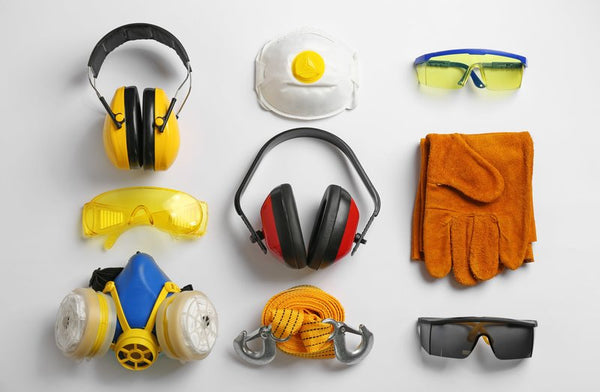
Selecting the correct type of PPE is vital to ensuring safety in the workplace. There are six basic categories of PPE.
Eye and face protection keeps harmful chemicals and physical contaminants out of the eyes. Face shield PPE can prevent sparks from welding or cutting from burning the eyes and face. PPE face masks reduce transmission of infectious diseases by limiting droplet and airborne particles reaching mucous membranes. PPE goggles can also be used to protect eyes from bright lights, glare and foreign objects. They may be worn alone or over prescription lenses.

Head protection is required for “employees working in areas where there is a possible danger of head injury from impact, or from falling or flying objects, or from electrical shock and burns.” (OSHA standard 29 CFR 1910.135). An ANSI-approved PPE helmet should be waterproof and slow burning, offer protection against penetration by objects, absorb the shock from an impact and be accompanied by clear instructions for use and care.

Hand and arm protection are largely accomplished with PPE gloves, but they may not be suitable for all applications In certain situations, such as when working with machinery where gloves might catch, other PPE such as finger guards or cots, barrier creams, arm protectors or sleeves are a better choice.

Hearing protection helps prevent hearing loss from exposure to loud noise. PPE earpieces may be external muffs or plugs that are inserted into the ear.

Full body protection is generally achieved through PPE overalls or aprons worn over regular clothing. These offer protection from chemicals, extreme temperatures and sparks from welding or electrical hazards.

Foot and leg protection is achieved with PPE boots, chaps, gaiters and shoe covers. Footwear should be sturdy and supportive while offering protection against electrical and chemical hazards.

Respiratory protection such as respirators and masks keep harmful particles and chemicals from entering the lungs. They may serve to filter dust or gasses or supply clean air through a sealed system.
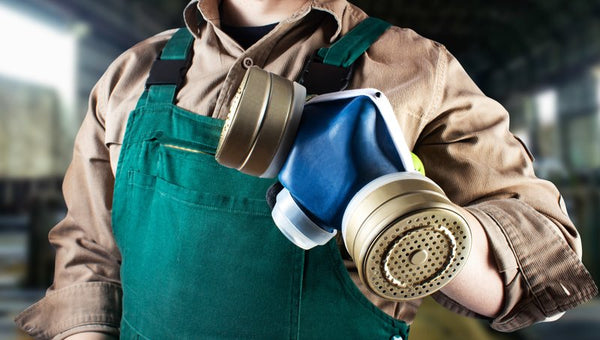
OSHA PPE Requirements
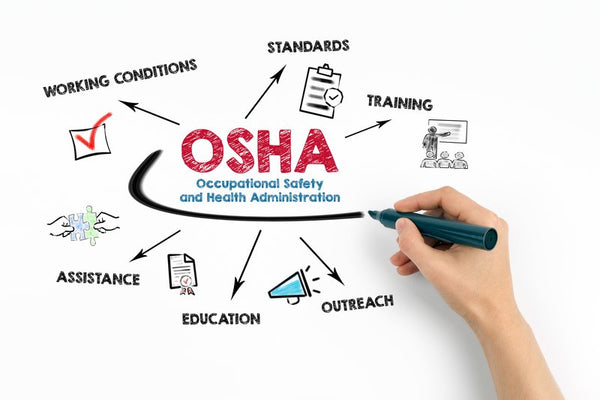
OSHA PPE standard 1910.132 lays out general requirements for PPE in the workplace. These define PPE that is required under general working conditions, who is responsible for the cost of OSHA PPE, and training that must be provided. According to this standard, employers are responsible for:
- Assessing hazards in the workplace and certifying that assessment
- Providing and maintaining appropriate OSHA PPE
- Training all employees on current standards including what PPE is required and the proper care, maintenance and adjustments of it
While employers must provide required PPE at no cost to employees, they are not responsible for non-required specialty products.
OSHA PPE standards conform to requirements set by the American National Standards Institute. ANSI does not establish binding regulations. Rather, it sets best practices for safety equipment and procedures. PPE requirements for eye and face protection in occupational and educational settings are outlined in ANSI/ISEA Z87.1-2015.
OSHA standard 1910.132(f) mandates that training must include:
- When PPE should be worn
- What PPE is necessary
- How to properly adjust and wear PPE
- Procedures approved by OSHA for donning and doffing PPE
- Maintenance and care procedures for all required PPE
All employees must demonstrate knowledge of these procedures. If any employee cannot demonstrate competency with PPE procedures, he or she must receive additional training. Training should also be offered after any changes to workplace policies, procedures or PPE requirements.
CDC PPE Guidelines

PPE is used in healthcare settings to reduce the transmission of infectious diseases. The CDC issues guidelines for the use of personal protective equipment (PPE) in medical settings such as hospitals, doctors’ offices and testing facilities. According to the CDC, PPE is only one component of a comprehensive infection control policy. The other components include training and administrative, engineering and work practice controls.
Proper PPE should always be matched to expected exposure. Base PPE selection on the type of exposure expected, the category of isolation of infectious agents, the appropriateness and durability of PPE for each task and how it fits each individual. Following CDC donning and doffing PPE procedures reduces contamination and potential exposure to pathogens. Displaying PPE posters throughout the workplace encourages proper use and care of protective equipment.
PPE Use Examples

The type of PPE you need to use will depend on the hazards present. Each occupational setting should be assessed individually, with appropriate precautions then taken to ensure PPE safety. Here are three personal protective equipment examples based on specific occupational scenarios that highlight the need for ongoing and individualized assessments of each workplace.
- In a medical setting, CDC guidelines will dictate the types of PPE hospital staff will use. Masks, gowns, shoe coverings, face shields and head coverings are commonplace. Respirators may be required depending on the hazards present. Additionally, all protective medical equipment must conform to FDA standards and pass a review before being sold in the United States.
- PPE policies at construction sites and manufacturing facilities are governed by OSHA standards. Hardhats and helmets are common types of PPE construction workers use to protect against traumatic brain injuries and punctures. Safety shoes and steel toes boots provide traction, chemical resistance and an extra line of defense against impact or crushing injuries to the feet. Gloves can shield hands from physical and chemical hazards, but care should be taken when operating machinery where a glove or long sleeve can catch and pull an operator in.
- Welding PPE should include heavy gloves and an appropriate face shield. These must always be worn by both operators and attendants to avoid eye injury from sparks and radiant energy. Safety glasses and face shields guard against eye damage from sparks and other hazards that might be present on a construction site. OSHA standard 1910.252(b)(2)(ii)(A) states that “Helmets and hand shields shall be made of a material which is an insulator for heat and electricity. Helmets, shields and goggles shall be not readily flammable and shall be capable of withstanding sterilization” as well as protect the head, face and neck from radiant energy produced by the welding arc.
How To Put On PPE
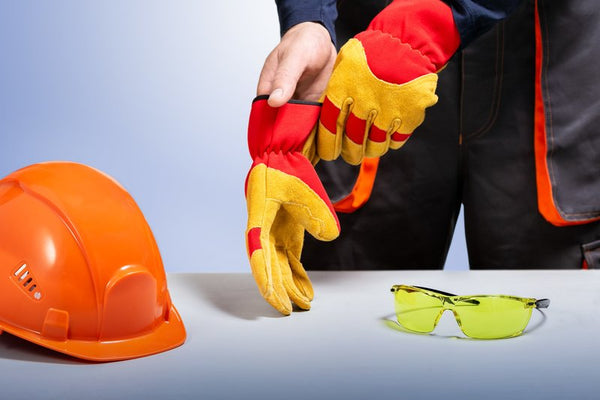
Both OSHA and the CDC recognize the importance of correctly putting on and taking off PPE. Failure to follow approved procedures can result in accidental exposure to hazardous or infectious materials. Therefore, all employees should be trained on how to don and doff PPE. They should also be trained on how to make PPE adjustments to ensure a proper fit.
The CDC explains that PPE should be donned in this order:
- Put on your gown first
- Follow that with a face mask or respirator
- Next, goggles or a face shield
- Put on your gloves last
Conduct fit checks and make any needed adjustments as you don each type of PPE before moving on to the next stage. Since the exact types of PPE that are required for each situation will be different, you may need to adjust or add to the order. Use common sense and an understanding of the applicable hazards to choose the best sequence if it is not clearly defined.
Any areas or situations that require PPE to be used should be marked with an appropriate PPE Required sign. This alerts workers to potential hazards and the need for additional protective measures. The type of equipment required should be clearly indicated.
Once employees are no longer at risk of exposure to the hazard, PPE can be safely removed. Instructions for how to remove PPE should be included upon exiting the area. Each employee should be trained on how to remove PPE in the correct order. This ensures no cross contamination during the doffing process. According to CDC procedures, the correct order for removing personal protective equipment is as follows:
- Identify the contaminated and clean surfaces of your PPE before you proceed
- Remove gloves first since they are considered the most contaminated PPE gear
- Remove the face shield or goggles next
- Doff your gown
- Remove your respirator once you are no longer at risk of exposure
Always be sure to wash your hands following proper procedures once you have removed your PPE to further minimize any hazards.
ComplianceSigns Has the PPE Signs and Posters You Need
Personal protective equipment is a vital part of maintaining workplace safety. When effectively used, it serves as an added line of defense against physical, chemical, biological, radiological and mechanical hazards. OSHA standards, CDC guidelines and FDA regulations include the types of PPE that are required based on what hazards are in the workplace.
Properly placed signs, posters and infographics can help you keep workers informed about necessary PPE and approved procedures for its use. ComplianceSigns offers a full line of PPE posters and PPE safety signs for all types of businesses.
Personal Protective Equipment FAQ
Do you still have questions about PPE and its use? We have gathered some commonly asked questions along with answers to help you navigate the topic.
What are PPE items?
Personal protective items are pieces of equipment that help reduce environmental or occupational hazards. They protect against such things as chemicals, heat and cold, electrical hazards and infectious diseases.
What is PPE gear?
A few of the most common types of PPE gear include face masks, eye and ear protection and protective headwear. Steel toe boots are another example of a widely used form of PPE.
What is PPE used for?
According to OSHA’s Personal Protective Equipment publication, PPE is used “to minimize exposure to a variety of hazards” that may be experienced. It should be used as part of a comprehensive workplace safety program.
Why is PPE important?
PPE is an important part of workplace safety because it reduces exposure to hazards. This reduces the number of injuries and illnesses that occur and helps keep employees healthy.
How do you make PPE?
PPE must meet standards set forth by occupational organizations such as ANSI and OSHA for workplace safety, so its manufacture is carefully controlled. Private use PPE can be made by sewing non-surgical cotton face masks and plastic gowns or using 3D printers to create face shields, respirators and PPE parts.
What is a PPE kit?
A PPE kit is a pre-packaged unit containing all necessary PPE for a given hazardous situation. This often includes a gown, face shield, mask, goggles, shoe covers, and gloves.
Additional Resources
For additional information about PPE, and how to ensure workplace compliance, visit these additional resources:

